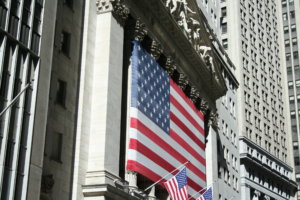Mexico is going through a complex scenario, both in its internal and external environment. Last year was one of the most complicated ones for the Mexican peso. And things remain unclear for 2017: external factors influenced mainly by the US electoral process and its outcome have compromised Mexico’s economic performance.
Click here to continue readingLast year, non-financial companies issued $674.3 billion in corporate debt, a new record high. Low interest rates are wrecking the allocation of capital: the increase in debt is not used to invest, but rather to distribute cash to shareholders. However, there is one important caveat to this whole scheme that will threaten the U.S. economy.
Click here to continue readingIt seems that 2006 was a long time ago—the year when Rafael Correa was not yet president of Ecuador. Nevertheless, there was an Ecuador before him: a troubled country that had seven presidents in only 10 years. With elections just around the corner, what economic model will mostly benefit Ecuadorians?
Click here to continue readingWith the persistence of the new president of the United States to build a wall and his expectation to make Mexicans assume the cost, new creative initiatives to find a way to make them pay it are starting to emerge.
Click here to continue readingIt seems that the echoes of Spain’s Great Recession will never end. Despite the country’s strong growth for at least two years, the general feeling seems to be that of a country consumed by the resonance of its own misfortune.
Click here to continue readingThe main problem arises when a government deficit comes with a primary balance deficit. The primary balance is the difference between government revenue and expenses, without taking into account the cost of the debt (interests).
Click here to continue readingWhy didn’t the depreciation of the yen help exporters? Primarily, because large exporters are also large importers.
Click here to continue readingWe see that gold has appreciated at a composite rate of 3.33% for the time period in question. Fiat money saw a composite depreciation of 3.14%, which means that gold experienced a composite net return of 0.19% after inflation.
Click here to continue readingThe European Central Bank embarked upon an enormous expansion of its balance sheet and is now running into its limits: there are simply not enough (eligible) assets to buy. How much time has ECB-chairman Mario Draghi left?
Click here to continue readingThe 2008 crisis was provoked by a credibility gap created by financial instruments used during transactions conducted by shadow banking entities. These instruments are called credit derivatives and examples include credit default swap (CDS) and asset backed securities (ABS).
Click here to continue readingGet our free exclusive report on our unique methodology to predict recessions










